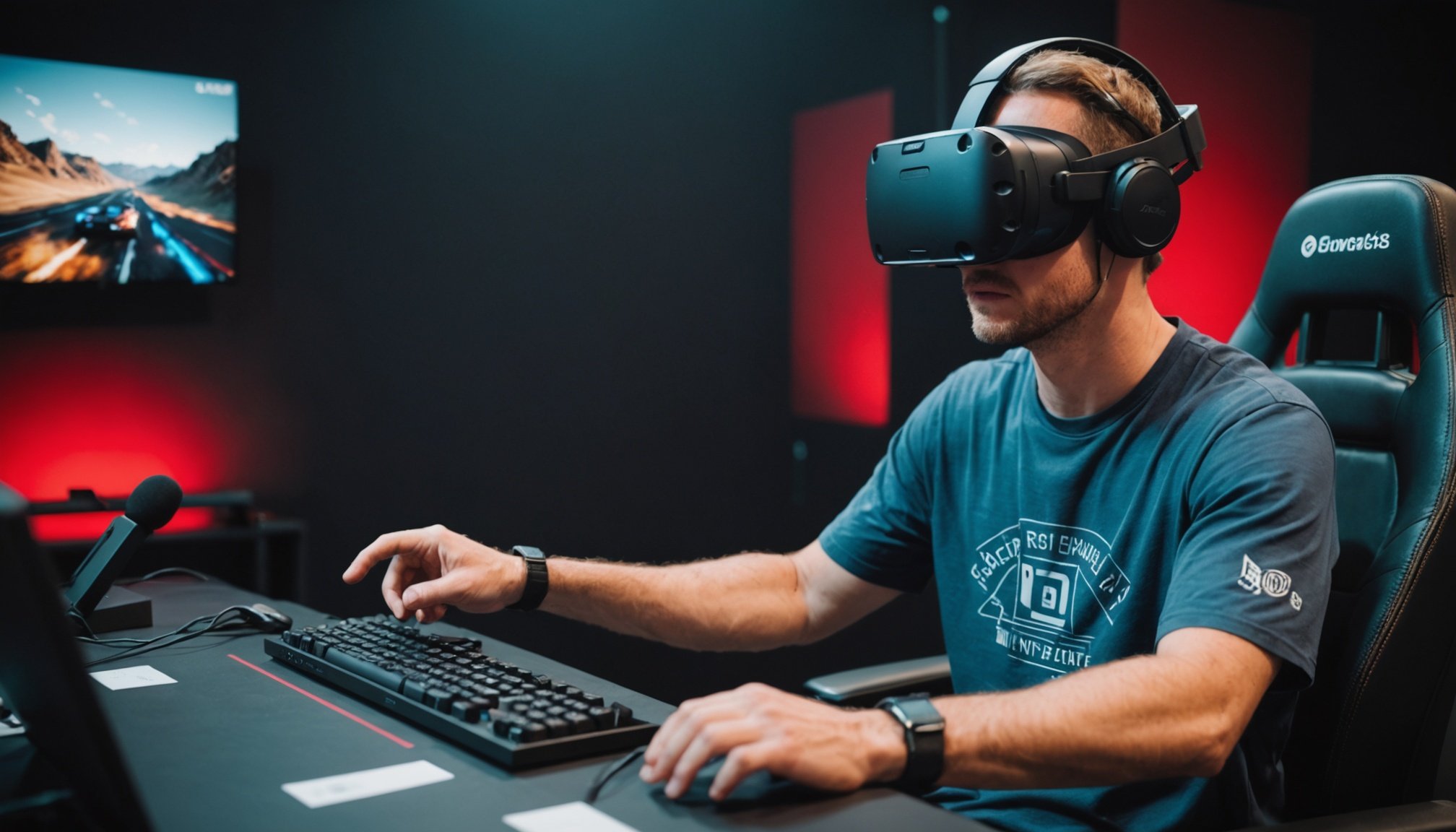Understanding Gameplay Dynamics and User Experience
Gaming dynamics have significantly evolved, altering the user experience in multifaceted ways. Central to this shift is the advent of Virtual Reality (VR), offering immersive environments that contrast with traditional gaming. Despite these differences, both platforms share a fundamental goal: to deliver engaging, seamless gameplay.
The key differences between VR and traditional gaming lie in their interaction methods and sensory engagement. VR offers a 360-degree experience with physical movement, while traditional gaming relies on controllers and screen interfaces. However, both forms strive to engage users through compelling stories and interactive environments.
Also to see : Unlocking Photorealistic Character Textures: Proven Techniques for Next-Gen Gaming Mastery
User experience is a critical element that shapes gaming enjoyment. Seamless gameplay, achieved through uninterrupted transitions and consistent performance, is vital for maintaining player engagement. Disruptions in a game can break the immersive experience, crucial in VR, where reality blend is part of the attraction.
Yet, both VR and traditional formats emphasize fluid dynamics and responsiveness. Adaptive control systems and VR integration techniques aim to minimize lag, ensuring that gameplay remains smooth and engaging, enhancing overall satisfaction. Understanding these dynamics is key to appreciating and navigating the richly diverse world of gaming.
This might interest you : Essential Elements for Crafting an Intuitive Inventory System in Complex RPGs
Innovative Strategies for Seamless Gameplay Transitions
To create seamless transitions between gameplay phases, innovative strategies are pivotal. With advancements like VR integration, developers strive to enhance engagement through fluid gameplay strategies. This approach requires an effective blend of technology and design, ensuring consistent player immersion.
Utilizing Adaptive Controllers and Accessories
Adaptive controllers play a significant role in achieving seamless transitions within VR and traditional gaming environments. These devices adjust to players’ movements and preferences, offering a personalised experience. Such adaptability not only increases comfort but also maintains gameplay continuity, bridging the gap between different gaming modes.
Adjusting In-Game Settings for Consistency
Adjusting in-game settings is crucial for maintaining gameplay strategies that support seamless transitions. By fine-tuning graphics, audio, and control sensitivities, players can optimise their gaming experience. Uniform settings across platforms ensure that players enjoy a consistent performance, minimising potential disruptions.
Coordinating Physical Space for VR and Console Play
For a seamless VR to traditional gaming transition, coordinating the physical environment is critical. Ensuring adequate space and a suitable layout prevents issues related to restricted movement or equipment interference. A well-organised space supports VR integration efforts, enhancing gameplay fluidity and user immersion.
Enhancing Gameplay Flow with Technical Optimization
Technical optimization is crucial in maintaining smooth gameplay flow in both VR and traditional gaming. Optimal performance is often achieved through recommended hardware and software. For instance, high-performance processors, graphics cards, and RAM are instrumental in handling intensive game requirements, thereby reducing lag and enhancing player experience.
For efficient gaming, setting up dual environments tailored for VR and traditional setups can be beneficial. This involves organizing equipment such as headsets and controllers in one area and traditional consoles in another. Such an arrangement facilitates seamless transitions, ensuring players can switch modes without disruptions.
Latency reduction and frame rate optimization play pivotal roles in enhancing gameplay flow. High latency can disrupt user experience, leading to frustration. Similarly, maintaining steady frame rates is essential for engaging gameplay, especially in VR, where disruptions can cause discomfort. Implementing techniques such as network enhancement and updating graphic drivers can significantly decrease latency and improve frame rates.
Regular system updates and software maintenance are essential practices for gamers seeking to improve overall system performance. By ensuring their equipment is running efficiently, players can enjoy a fluid and immersive gaming environment, tailored to both VR and traditional gaming experiences.
Troubleshooting Common Transition Challenges
Troubleshooting common issues in gaming, particularly between VR and traditional setups, requires strategic solutions. One frequently encountered problem is latency, which can disrupt gameplay flow. To resolve latency issues, players should ensure their equipment setup is optimal. This involves using updated modems and routers in addition to wired internet connections, which are commonly more reliable than wireless ones. Additionally, regularly updating graphic drivers can significantly reduce lag.
Managing user discomfort during transitions, especially in VR, is another critical challenge. Discomfort often results from abrupt changes in motion or perspective. Adjusting in-game settings for smoother transitions in graphics and movement can help. Introduce gradual changes to ensure a seamless experience.
Finally, syncing game mechanics across platforms can be tricky. This issue can be addressed by using compatible software that supports cross-platform synchronization. Moreover, developers are encouraged to standardize gameplay mechanics to facilitate smoother transitions. Troubleshooting these issues can transform the way games are experienced, enhancing user experience without compromising engagement, emphasizing consistent and enjoyable gameplay across all platforms.
User Experiences and Expert Insights
Understanding user experiences is essential for refining gaming dynamics. Players often provide invaluable feedback on integration methods, highlighting areas needing improvement. Incorporating this feedback aids developers in crafting more immersive environments, bridging gaps between VR and traditional gaming.
Expert insights offer a strategic lens through which gameplay can be evaluated and enhanced. Such insights frequently arise from analysing case studies of successful transitions between various gaming types. These scenarios provide practical examples of how technology and design can synergize to heighten user experience.
Experts frequently recommend employing adaptive feedback loops to gather real-time data from users. This dynamic approach allows for continuous improvements based on actual user interactions. It enables seamless integration of new features and mechanisms that align with evolving player expectations.
Furthermore, experts stress the importance of cross-functional collaborations between developers, designers, and users themselves. This partnership facilitates innovative solutions tailored to player preferences, ensuring that both VR and traditional systems remain engaging and relevant.
In conclusion, deeply understanding player feedback and integrating expert recommendations are pivotal for achieving a harmonious balance between advanced gaming dynamics and user satisfaction. This focus ensures continual evolution and enhancement of gaming experiences across diverse platforms.
Future Trends in Gaming Integration
As gaming technology evolves, future trends point towards a deeper integration of VR with traditional gaming experiences. Predictions indicate that new advancements will reshape the landscape, enhancing how players engage with digital worlds. One notable development is the increased use of AI and machine learning. These technologies are poised to revolutionise gameplay by enabling smarter NPCs and more personalised gaming experiences.
Machine learning, for example, can adapt games to players’ unique styles and preferences, predicting actions and tailoring challenges in real-time. This level of personalisation offers exciting potential for creating highly immersive environments that transition smoothly between VR and traditional settings.
In addition to AI, community engagement plays a pivotal role in shaping future gaming experiences. Players actively contribute feedback, influencing game development and highlighting desired features. Engaging user communities empowers gamers to participate directly in design processes, ensuring games align with their expectations and preferences.
Future trends will also see enhanced collaborative gameplay experiences, driven by technological advancements. Integration will expand, allowing more seamless transitions between different gaming formats. These developments promise to enrich the depth and quality of user interactions across various gaming platforms.










